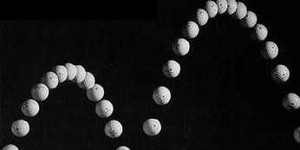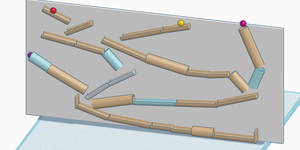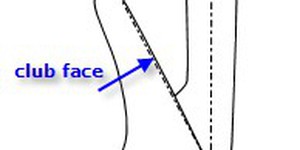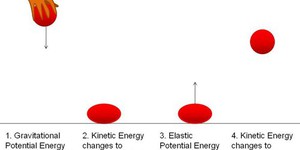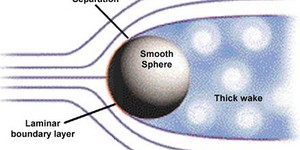Others Like “Balls Bouncing Off of Surfaces” (top 20 results)
|
Think of hitting a baseball, heading a soccer ball into the net, or hitting a tennis ball with a racquet. Where the ball goes depends on...what? You can set up a simple model to start your investigation. You'll need a marble, a flat piece of wood, a flat piece of cardboard, a pencil, a ruler, a protractor, and a level surface. Lay down the cardboard down on a level surface and set up the flat piece of wood at one edge. The wood will act like a wall, and you're going to roll the marble at…
Read more
Many sports use a ball in some way or another. We throw them, dribble them, hit them, kick them, and they always bounce back! What makes a ball so bouncy? In this experiment you can investigate the effect of air pressure on ball bouncing.
Read more
Do corked bats really hit the ball further? What about other materials? Here's a project to find out.
Read more
Science Buddies has many projects where you build something with moving parts or do an experiment with the physics of moving objects. Here are just a few examples, but this is not an exhaustive list! You can search our site to find many more.
Ball launcher (Figure 1)
Marble roller coaster (Figure 2)
Rube Goldberg machine (Figure 3)
Build A Wall Marble Run (Figure 4)
Figure 1. A catapult-style ball launcher.
…
Read more
If your idea of a great weekend morning is taking some practice swings at a driving range, or heading out to the links to play a round, this could be a good project for you. This project is designed to answer the question, what is the relationship between club loft angle and the distance that the ball travels when struck.
Read more
Block off one-third of a soccer net with a cone, 5-gallon bucket or some other suitable object. Shoot into the smaller side from a set distance, but systematically varying the angle to the goal line. Take enough shots at each angle to get a reliable sample. How does success vary with angle? For a basic project: How do you think your success rate will vary with angle? Draw a conclusion from your experimental results. A bar graph showing success rate at different angles can help to…
Read more
You might think that plants and animals have little in common with batteries, springs, or slingshots, but they actually do have something in common. Both living and non-living things store and transfer energy from one form to another. In this physics science fair project, you'll investigate this energy storage and transfer, not in a plant or animal, but in bouncy balls. You'll find out if there are limits on how much energy can be stored and if there are losses when the energy is transferred.
Read more
When the punter is trying to hit the "coffin corner" (within the opposing team's 10-yard line), out of bounds, what is the best angle to kick the ball for correct distance and maximum "hang time?" (For more information on the physics involved, see: Gay, 2004, Chapters 4 and 5.)
Read more
Have you ever wondered why golf balls have a pattern of dimples on their surface? The dimples are important for determining how air flows around the ball when it is in flight. The dimple pattern, combined with the spin imparted to the ball when hit by the club, greatly influence the ball's flight path. For example, backspin generates lift, prolonging flight. When the ball is not hit squarely with the club, varying degrees of sidespin are imparted to the ball. A clockwise sidespin (viewed from…
Read more
Tennis racquets, baseball bats and golf clubs all vibrate when they hit the ball. You can often feel it in your hands, particularly if you "mis-hit" the ball. You can find the point(s) on your racquet, bat or club—called the "sweet spot"—that minimize unwanted vibrations. Low-tech method: hang the racquet or bat straight up and down with a string from its handle. Lightly hold the handle with your thumb and forefinger and have a helper sharply tap the bat, strings or club face…
Read more
|
Explore Our Science Videos
Marble Roller Coaster Science Project
Video: How to Balance Anything
Bottle Rocket Parachutes



